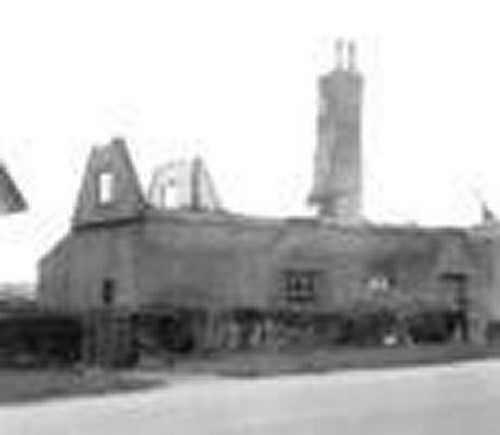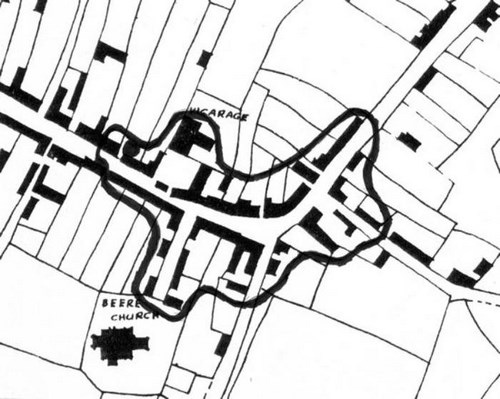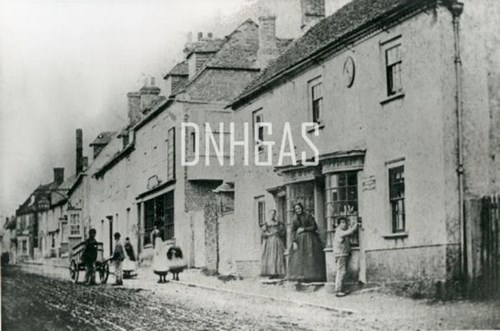The following account shows how the appeal fund monies were apportioned:
Collected by voluntary subscription of the county ... £1,279 19s. 4d
Paid to 39 sufferers by fire in the said town of BereRegis, in three classes, viz. to the first class, who were most distressed, and had lost their whole property, 14s. (70p) in the pound; to the second class, lls. 6d. (571p); and to the third class, 7s. 6d. (37 1/2P). ............................................................ £1,193 13s. 8d.
By advertisements, fire engines, firemen, assistantsin removing goods and quenching the fire, and other incidental expenses ............................... £ 62 5s. 8d.
Left in the treasurer's hands, to be applied towardsbuying a new fire-engine for the said town, theold one having been burnt in the fire ..................... £ 24 Os. Od.
Total .............................................................................................£1,279 19s. 4d.
The `Crown' is referred to in the churchwarden's accounts, and was situated between numbers 88 and 89 on the north side of West Street.
Before 1788 this central part of the village was very densely built up, and the area destroyed by the fire extended from just north of the church to the old vicarage (now `Summerods') in a north-south direction, and from the Royal Oak to no. 30 West Street in an east-west direction.
Most of the buildings were totally destroyed and no traces of them now remain, but in those cases where destruction was not so complete rebuilding was carried out on the old foundation walling, and evidence of this may still be seen in several buildings in this area.
23rd June 1816
On 23 June there was a fire at Bere Regis, and there is some evidence to suggest that it burned down the Mill at Elders Mead, below the church and the associated miller's house next to the Mill near Southbrook.
6th April 1887
Hyde House burned down on 6th April 1887 and most of the house was destroyed although some parts remained standing but damaged.
Charles James Radclyffe was the resident at the house, but by the time a messenger was dispatched by horse to the village for help, the fire was completely out of control.
Many villagers went to Hyde later that day to view the smouldering ruins.
1890
There was a fire at West Mill in West Street at the Dorchester road end of the village at some time in 1890.
A parish magazine published in 1891 referred to "the Burnt Mill".
1902
What became known as "the Old Post Office" was burnt down in 1902.
It was situated between No.88 and No.89 West Street, ironically on the same site where the 1788 fire began, and now where Cyril Wood Court is located.
You can see a Photograph of the Old Post Office below -




